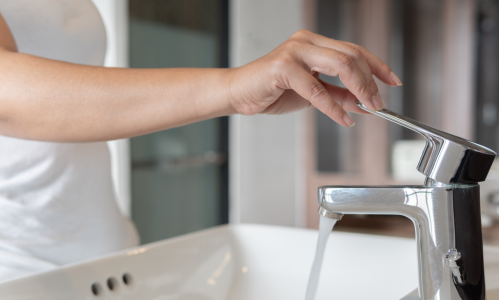Discover the Tiny Magnetic Device That Could Revolutionize How You Battle Incontinence
By
Gian T
- Replies 6
Incontinence is a common issue that affects millions of people worldwide, and it can be a source of embarrassment and inconvenience for many, particularly for our community of over 60. However, a groundbreaking new device, no larger than a cigarette, could offer a revolutionary solution to this problem for both men and women.
This innovative implant, which functions as a one-way valve for the bladder, is designed to put an end to the distressing leaks that many experience. The device is spring-loaded and features a tiny magnet. It is implanted at the crucial junction where the bladder meets the urethra—the tube responsible for ushering urine out of the body.
When nature calls, the patient uses a magnetic hand-held controller, holding it over their lower abdomen close to where the implant is located. The magnetic attraction between the controller and the implant draws the device towards the controller, which in turn releases the spring and opens the valve, allowing urine to flow freely.
After the patient has finished their business, a simple flick of a switch on the controller reverses the process, closing the valve and ensuring that leaks are prevented. The results from initial tests are promising, with volunteers reporting an impressive 82 per cent reduction in the number of leaks after using the device for three months.
In the UK, NHS England estimates that around 14 million individuals suffer from urinary incontinence, with stress incontinence—where leaks occur due to pressure on the bladder from coughing or laughing—making up about 40 per cent of these cases. This condition is often the result of weakened pelvic floor muscles, which are crucial for controlling urination.
For women, risk factors include the physical toll of pregnancy and vaginal birth, which can stretch and weaken the pelvic floor muscles. Men, on the other hand, may experience incontinence primarily due to nerve damage following prostate cancer surgery.
Current treatments range from pelvic floor muscle exercises to medications like duloxetine, which can enhance muscle tone in the urethra. Some patients also undergo surgical procedures to provide additional support to the bladder neck. However, the use of vaginal mesh, once a common surgical solution, has been significantly reduced due to serious complications experienced by some patients.
The new magnetic implant, which can be inserted in a mere ten minutes under local anaesthetic, represents a potentially simpler and more effective treatment option for both men and women. Doctors insert the device using a catheter, securing it in place with a metal tube or stent.
The mechanism is straightforward: the magnets inside the body and the hand controller attract each other with opposite poles to open the valve and repel each other when the poles are switched, closing the valve and preventing leaks.
Published in the Journal of Endocrinology, a report by researchers from several Italian centers, including Rome University which developed the implant, highlighted 'remarkable improvements' in symptoms among participants.
Professor Raj Persad, a consultant urologist at Bristol Urology Associates, praised the device as 'ingenious and very promising.' He also noted the importance of continued vigilance in the trial phase, taking into account factors such as tissue aging and weight gain that could affect the device's functionality.
For our readers who may be dealing with incontinence, this device could be a game-changer, offering a new lease on life without the worry of leaks. It's a testament to the incredible advancements in medical technology that aim to improve our quality of life.
 We'd love to hear your thoughts on this new development. Have you or someone you know struggled with incontinence, and would you consider a device like this as a potential solution? Share your experiences and opinions in the comments below, and let's discuss the future of managing incontinence together.
We'd love to hear your thoughts on this new development. Have you or someone you know struggled with incontinence, and would you consider a device like this as a potential solution? Share your experiences and opinions in the comments below, and let's discuss the future of managing incontinence together.
This innovative implant, which functions as a one-way valve for the bladder, is designed to put an end to the distressing leaks that many experience. The device is spring-loaded and features a tiny magnet. It is implanted at the crucial junction where the bladder meets the urethra—the tube responsible for ushering urine out of the body.
When nature calls, the patient uses a magnetic hand-held controller, holding it over their lower abdomen close to where the implant is located. The magnetic attraction between the controller and the implant draws the device towards the controller, which in turn releases the spring and opens the valve, allowing urine to flow freely.
After the patient has finished their business, a simple flick of a switch on the controller reverses the process, closing the valve and ensuring that leaks are prevented. The results from initial tests are promising, with volunteers reporting an impressive 82 per cent reduction in the number of leaks after using the device for three months.
In the UK, NHS England estimates that around 14 million individuals suffer from urinary incontinence, with stress incontinence—where leaks occur due to pressure on the bladder from coughing or laughing—making up about 40 per cent of these cases. This condition is often the result of weakened pelvic floor muscles, which are crucial for controlling urination.
For women, risk factors include the physical toll of pregnancy and vaginal birth, which can stretch and weaken the pelvic floor muscles. Men, on the other hand, may experience incontinence primarily due to nerve damage following prostate cancer surgery.
Current treatments range from pelvic floor muscle exercises to medications like duloxetine, which can enhance muscle tone in the urethra. Some patients also undergo surgical procedures to provide additional support to the bladder neck. However, the use of vaginal mesh, once a common surgical solution, has been significantly reduced due to serious complications experienced by some patients.
The new magnetic implant, which can be inserted in a mere ten minutes under local anaesthetic, represents a potentially simpler and more effective treatment option for both men and women. Doctors insert the device using a catheter, securing it in place with a metal tube or stent.
The mechanism is straightforward: the magnets inside the body and the hand controller attract each other with opposite poles to open the valve and repel each other when the poles are switched, closing the valve and preventing leaks.
Published in the Journal of Endocrinology, a report by researchers from several Italian centers, including Rome University which developed the implant, highlighted 'remarkable improvements' in symptoms among participants.
Professor Raj Persad, a consultant urologist at Bristol Urology Associates, praised the device as 'ingenious and very promising.' He also noted the importance of continued vigilance in the trial phase, taking into account factors such as tissue aging and weight gain that could affect the device's functionality.
For our readers who may be dealing with incontinence, this device could be a game-changer, offering a new lease on life without the worry of leaks. It's a testament to the incredible advancements in medical technology that aim to improve our quality of life.
Key Takeaways
- A cigarette-sized magnetic implant could provide relief for those suffering from urinary incontinence.
- The implant acts as a one-way valve at the junction of the bladder and urethra and is controlled externally with a magnetic hand-held controller.
- In trials, patients reported an 82 per cent reduction in the number of leaks after using the device for three months.
- The implant is considered a simpler and potentially more effective solution compared to current treatments, with implantation taking only ten minutes under local anaesthetic.








